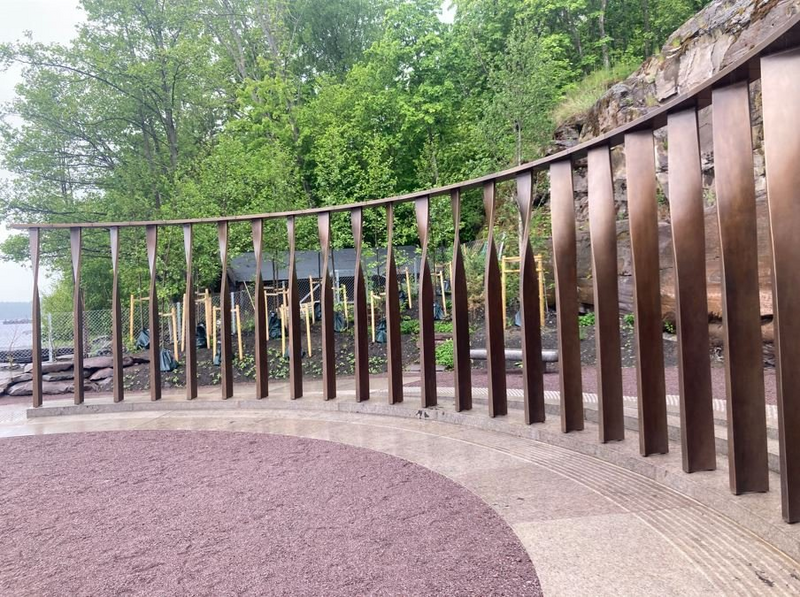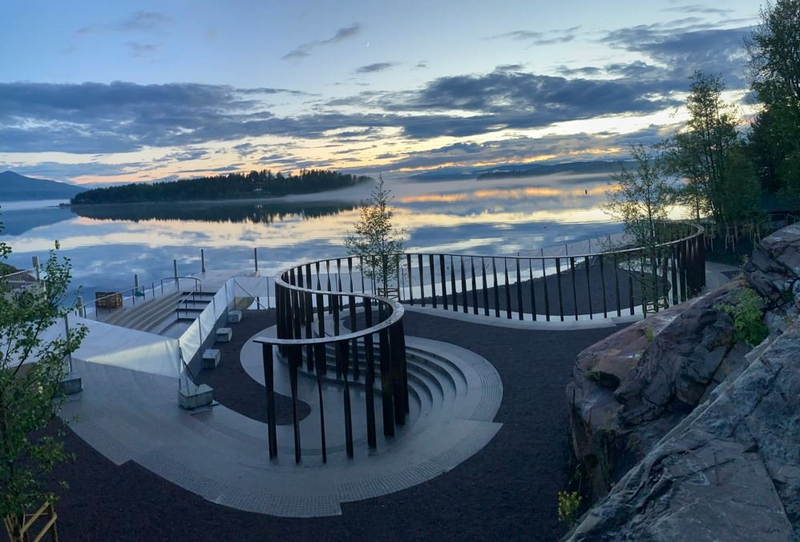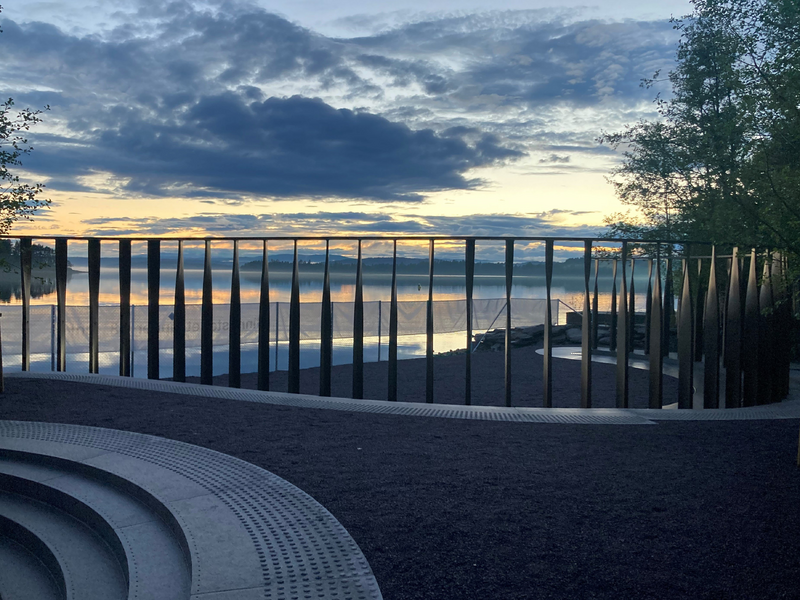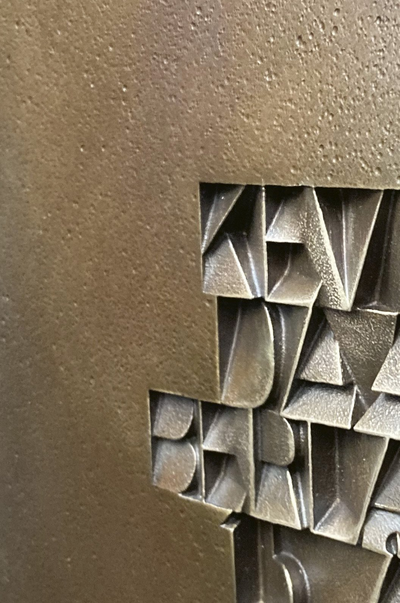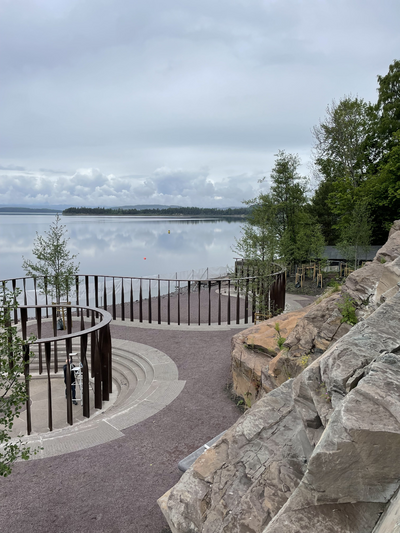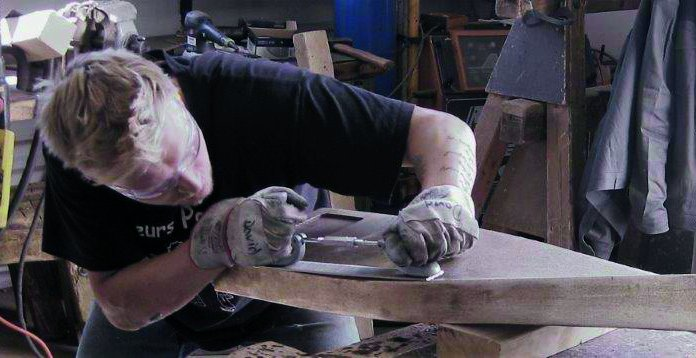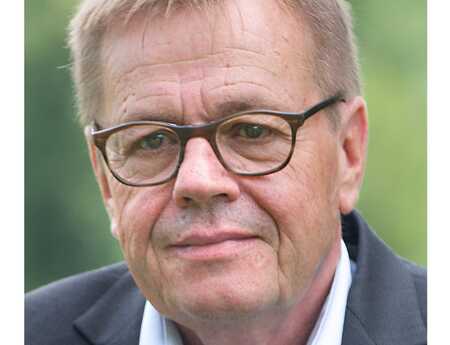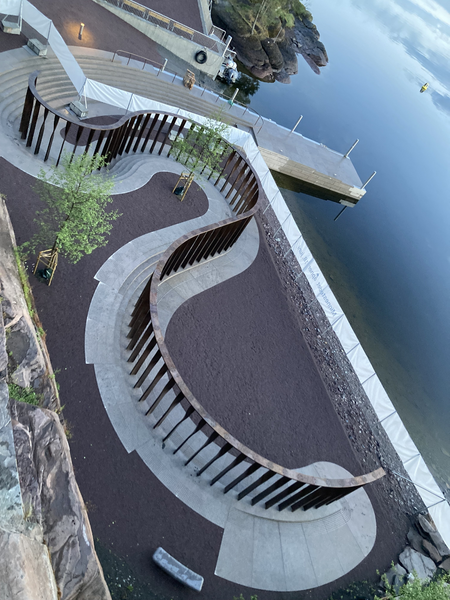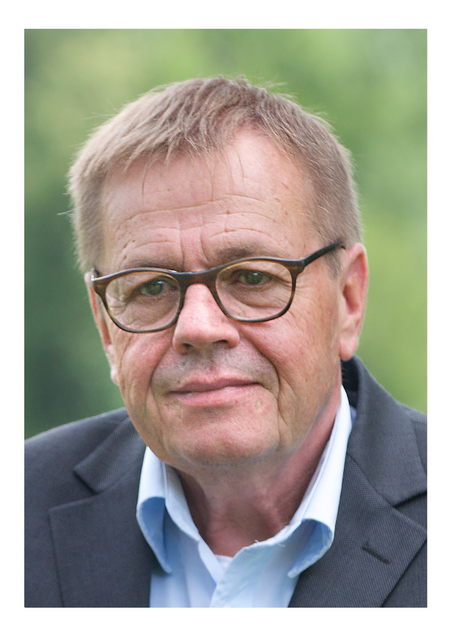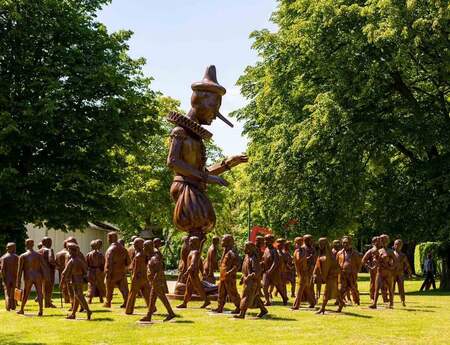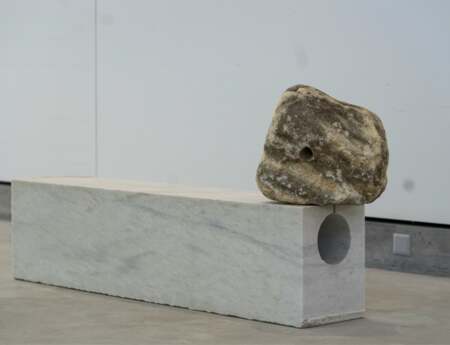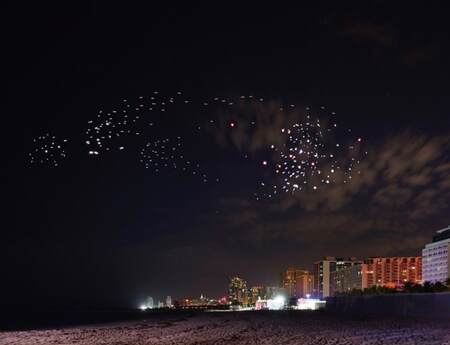77 German Bronze Stelae for a Norwegian Memorial
On 22nd July 2011, an assassin killed 77 people in the government district of Oslo, the Norwegian capital, and on the island of Utøya. The national memorial for the victims and their relatives of this terrorist attack has been open to the public since the middle of June 2022. The memorial was designed by the architectural firm Manthey-Kula Architects from Oslo, in collabortation with Bureau Bas Smets, a landscape architectural firm from Brussels, and marks the end of a years-long discussion about the construction of the memorial. The 77 stelae cast in solid bronze were manufactured and assembled by the Strassacker Art Foundry from Süßen, Germany.
The memorial’s location brought much controversy. Jonas Dahlberg, a Swedish artist best known for his video installations, had proposed digging a swathe into a rocky outcrop on the mainland, opposite the island of Utøya. His design was resented, and ultimately failed due to protest. In the summer of 2017,when the government decided to build the memorial in a different form, but on the same site, this again caused mixed feelings among the residents. There were fears of "shock tourism", re-traumatisation of the residents involved in the rescue operation in 2011, and above all, the concern that such a memorial could be misused by right-wing extremists. A number of neighbours sued, but the construction was then approved by a court in early 2021.
A place of mourning and hope
The memorial is located about 30 kilometres northwest of Oslo on a shore next to the pier of the ferry to the island of Utøya. On the island, the assassin had shot 69 mostly young people. Before that he had detonated a bomb in Oslo's government district, killing eight people. The course of events has been reconstructed. But it is still incomprehensible. How do you deal with the inconceivable? For Beate Marie Hølmebakk and Per Tamsen, owners of the Oslo architectural firm Manthey Kula, the design of the memorial is an attempt to deal with on the one hand, loss, pain and death. On the other hand, one of the challenges for the architects was to create a link between the brutal events of over ten years ago and the creation of a visible and tangible bridge to the future. Their office did not design a work of art, they emphasise. For the architects, the memorial is a place of mourning and consolation and – quite deliberately – also of hope, joy, and carefree life.
Making the time of terror visible
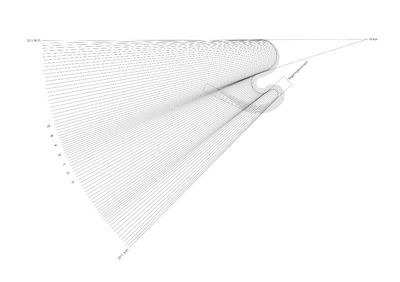
On the shore of the Tyrifjorden, a memorial consisting of 77 bronze stelae was built on a spacious terrace of light-coloured Norwegian granite, from which steps about 20 centimetres in height lead into the water. Each of these stelae is three metres high and has been turned to face in different directions. They are arranged in a two-part, concave-convex curved form that resembles a distorted S or the fragment of a wave. This row of stelae, which is around 50 metres long, is connected at the upper end by a continuous band, also cast in bronze.
The shadow cast by the precisely calculated arrangement and orientation of each individual stele refers to the position of the sun and its temporal course during the attack on 22 July 2011. A first, smaller – convex arc – is aligned with the position of the sun at the beginning of the attack with the bomb explosion in the Oslo government quarter at 15:25. The second, larger – concave arc – reflects the course of the sun's position during the assassination on the island of Utøya – from the assassin's arrival at 17:21 to his arrest at 18:33. Each of the stelae stands for one person killed; 8 in Oslo, 69 on the island of Utøya. The inscriptions of the victims' names were carved into the bronze stelae as negative-cut reliefs with different inclinations.
High demands on casting and machining technology
Each of these larger-than-life stelae facing different directions and, at the architects' request, solid cast stelae, weighs about 400 kilograms. A casting process that required a separate mould for each stele and – due to the technically necessary sprue system – another 400 kilograms of bronze for each of the stelae. A complex and unusual casting process that also has an impact on the surface quality of each individual stele, as Günter Czasny, deputy managing director of the Strassacker Art Foundry and responsible for the production and assembly of the stelae, explains. In addition, there were further requirements from the architects: For example, it was required that in the lower area the stelae be given the characteristic of a rough, unfinished (cast) surface, which transitions to a finely polished and shiny surface up to a high finish, which filigree light edges and differently inclined surfaces create diverse light reflections. Another requirement was the exact vertical edge and the resulting light edges, which particularly emphasise the individual rotation of each individual stele, reflect the light of the sun and thus provide the desired shadow cast by each individual stele on the floor.
Comfort, hope and confidence
The solidity and tactile quality of the solid stelae, their carefully shaped surfaces and precise edges are impressive. Although the stelae are of the same height and width, each one is different, individualised by the rotation, by the personal name plaques, the individual surfaces, and the precise finishing of the edges. The shadow cast by the positioning of the stelae is reminiscent of a sundial; a sign of transience and the future that is only visible at second glance.
On 11th July 2011, 77 people were killed in the centre of Oslo and on the island of Utøya. These people were of different ages, different sizes, had different orientations. Without figurative elements, realistic depictions or narrative components, this memorial succeeds in calling the cruelty that happened there eleven years ago to the consciousness of every single visitor. The memorial offers those affected comfort for today and hope for tomorrow. It tells of what happened on 11th July 2011; even when there is no one left to tell of the explosion in Oslo and the indiscriminate shooting on the island of Utøya.
About the Strassacker Art Foundry
The Strassacker Art Foundry, or Kunstgießerei Strassacker in German, celebrated its one hundredth anniversary in October 2019. As one of the leading manufacturing companies in the field of art casting in Europe, the company employs around 320 people and has an international presence, with a branch in France and representatives in Switzerland, Austria, Benelux, Scandinavia, the USA and Saudi Arabia.
One of the company's divisions is Strassacker Manufaktur, which commissions work for internationally renowned artists and architects. Another division is Edition Strassacker with sculptures for private enthusiasts and collectors.
However, the company's main focus is on sacred art with artistic design elements for gravesites and grave markers. In this area, Strassacker has been conducting basic research for many years on the development of existing cemeteries and the significance of a place of burial for the bereaved and people in general. As the responsible sponsor of the Space for Mourning initiative, the company has carried out research projects with the University of Passau and the Matthias Horx Institute for the Future, among others, and is constantly drawing on the knowledge and experience of other scientists from the fields of sociology, psychology, architecture, and landscape architecture. The results of these research projects are currently being implemented in a vivid and tangible way in the Cemetery of the Future, a laboratory and area for experiments next to the company premises in Süßen.
Translation: Hannah Griffiths
Published: September 2022
Cover picture: © Kunstgießerei Strassacker

